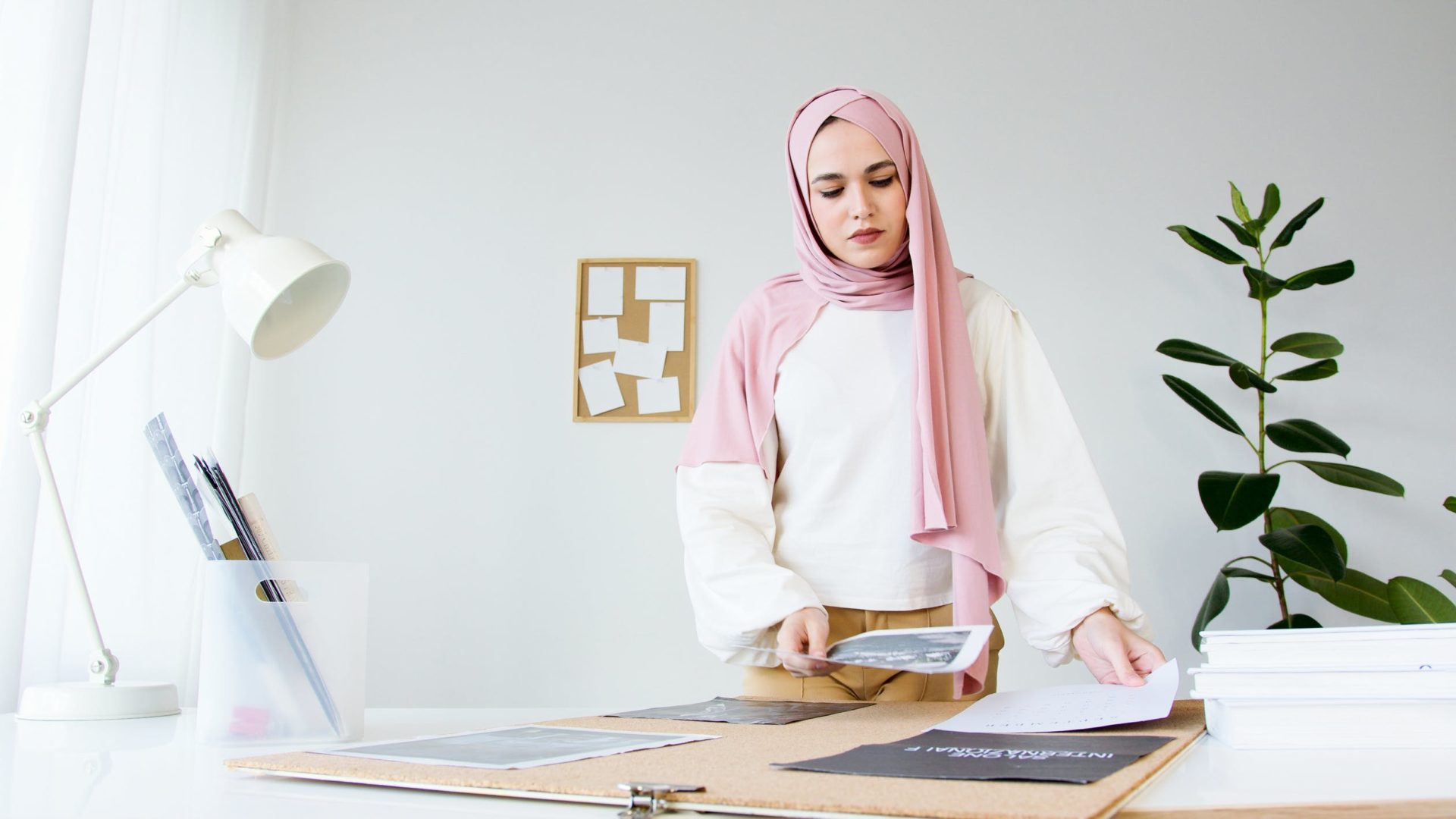A brief history into the trade, migration and settlement of Muslims in Australia
Although it is widely believed that colonists from Europe were the first to make contact with the Indigenous population, a more careful look at the brief history surrounding the land will reveal that Muslims were interacting, trading and building intimate relationships with the Indigenous centuries prior to the arrival of Captain Cook and his fleet.
The Makkasan ships of trade
On the South-East coast of Sulawessi, 1,493 kilometres out from Darwin, you will discover a large capital city brimming with life. Makassar, despite its distance from the Australian mainland, played a major role in forming the international network of trade for the Aboriginal people.
According to radiocarbon dating, Muslim contact in Australia is known to have occurred as early as the 1500’s – namely from Makassan fishermen who travelled to Australia in search of sea slugs and sea cucumbers – which tended to attract high prices from the Chinese due to their use in medicine and cultural cuisine.
This later developed into trade of material goods between the Aborigines and the Indonesians. This ultimately left lasting impacts on the Indigenous Australian communities in the form of Islamic motifs that were present in certain North Aboriginal communities’ traditions and rituals.
Impact of Makassans on Aboriginal Communities
Although many Makassans would simply trade and return to Indonesia, some also stayed and married into Indigenous tribes. This unique amalgamation left lasting impacts on the traditional Australian communities – for instance, in some mortuary ceremonies performed by the Galiwinku community, hymns sung are very similar in sound and tune to Islamic prayers with some words also being borrowed from the Islamic prayer.
Interestingly, the Aboriginal people believe in a certain deity known as Walitha’walitha. This is said to be linguistically derived from the Arabic term Allah ta’ala which means “God the Exalted”. Additionally, the prayers they partake in are also similar to Islam in that it requires them to face the west in prayer which, for them, is roughly facing the direction of Makkah.
Makkasan Morning Star Poles
The Banumbirr (Morning Star poles) made by Aboriginals were made to look like the masts of Makkassan boats. The long-lasting relationship between Makassans and Aboriginals ultimately ended in 1906 when British settlers killed off trade through imposing heavy taxation on non-white commerce in Australia.
Malay Pearler contact
This was not the only contact Muslims had with Aboriginals – Malay pearl-shellers also had regular trade with the Indigenous Australians which lasted from the late 18th to the early 19th centuries which – similar to the Makkasan traders – led to the development of matrimonial ties and crystallising the Islamic influence on these communities.
The result of such intensive interaction resulted in many people in Northern Australia possessing names such as Hassan, Doolah and Khan – names deeply rooted in Islamic tradition and culture.
Afghan Cameleer Contact
In the period spanning the 1860s through to the 1930s, the presence of around 4,000 Afghan cameleers in central Australia helped form critical railway and telegraph line infrastructure, as well as transport supplies between stations. Their camels were bred, sold and relied upon for transportation, but were eventually deemed redundant by the Australian community after the introduction of automotive vehicles. Nonetheless, they played an important role in shaping the future of the land we now call Australia.
The migration can be starkly contrasted to the tens of thousands of Chinese miners that travelled to Australia for the Gold Rush. In the 1800’s, Victoria, Adelaide and Hobart saw more than 50,000 migrants arrive from China and other parts of Asia in the hope of settling in the land down under – not dissimilar to the Afghani population.
However, the large number of men and women from Afghanistan, India, Pakistan and Bangladesh – who were seeing Australia for the first time – had a unique impact on the Australian context, the effects of which can still be witnessed til the present day.
As devout Muslims who abided faithfully by their religion, camel drivers from Afghanistan and Pakistan tended to build mosques in their settlements and rarely mixed with the rest of Australian society in the initial stages.
Beyond this period, the cameleers and their subsequent communities continued to settle in New South Wales, Queensland and other parts of Australia – many of whom still live in central Australia today.
Drawing upon the cameleers’ heritage, camel farms around Alice Springs and several other locations today host safaris for adventurous Australian and international tourists alike – as a means of continuing to revive this portion of Australian history.
Our generation
After World War 2 the largest wave of Muslims came to Australia, increasing the population from 2,704 in 1947 to 22,311 in 1971. In addition, large groups of Muslims from the Middle East migrated to the country – especially families from Lebanon who came as refugees from the Civil war in 1975. The Muslim community was further enriched by waves of Indian and Asian migration – particularly in the bustling population centres in Sydney and Melbourne – but also in isolated areas such as Western Australia, with the Muslim population there amounting to over 50,000. The latest statistic from the Australian Bureau of Statistics (ABS) suggets that 2.6% percent of the Australian population is currently Muslim – the vast majority of which have obtained Australian citizenship and speak English.
As of the 2016 census, there are now approximately 600,000 Muslims around Australia – having grown by 27% in population since 2011. A large portion, at 62%, immigrated to Australia from overseas, but less than 20% were born in Arab countries (HREOC 2004).
There has also been a recent rise in the number of Muslim reverts among the Indigenous Australian community – with the number growing by 60% from 641 to 1,014 in the period spanning 2001 to 2006 alone. Although some people from this demographic have Afghan or Malay ancestry, there are also many who do not have any Muslim ancestors at all, but yet, still choose to actively practise their religion.
Mosques in Australia
The first Mosque in Australia, the Marree Mosque, was built by the South Australian Afghan community in the 1860s – featuring a thatched roof, trunks of palm trees, and earthen walls. After being abandoned in 1901 and demolished by its caretaker in 1958, it was rebuilt in 2003 and still stands where it once was.
Mosques made by cameleers that have survived since the 19th/early 20thcenturies are unique to Australia – manifesting narratives of their outback hardship and resilience, and acting as symbols of the country’s rich natural heritage. These are often “humble outback structures” – an example of which is shown in the image above.
The architecture of the mosques in Australia has transformed over time, reflective of the continuing negotiations between Muslim and non-Muslim communities, as well as growing inspiration from international architecture. Such changes play a significant role in emphasising how the “Australian-Islamic architectural identity” has continued to be morphed around a context involving many diverse sources and multicultural backgrounds.
One of the most recent emblems of the contemporary Australian-Islamic architectural identity is the Australian Islamic Centre in Newport, Victoria – which draws upon a discourse that strikes an amalgamation between historic Islamic art and architectural design that is reminiscent of landmarks around Melbourne – such as artist Leonard French’s work within the National Library of Australia.
There are currently more than 340 Mosques in Australia and countless other prayer spaces known as “Musallahs” – most of which were built after the late 1970s.
Islamic Schools in Australia
Due to an increase of Muslim population and a lack of Islamic education, the first Islamic school in Australia was founded in Melbourne in 1983 by the Australian Federation of Islamic Councils (AFIC) – initially known as King Khalid Primary School, but later known as the Australian International Academy. The motive of the Muslim community at that time in starting an Islamic school was to allow their children to be immersed in an Islamic environment that held Islamic values and beliefs in high regard beside their education.
Another Islamic school founded in 1983 was Noor Al-Houda Islamic College in Sydney – which began as the vision of Silma and Siddiq Buckley, two reverts from the Anglo-Australian community. Upon having their daughter facing struggles from being able to wear the hijab to her previous school, they sought to start an Islamic school that abided by their Islamic beliefs and principles.
According to a study in 2014, there are now approximately 35 Islamic schools around Australia – with Sydney and Melbourne having the largest number of schools respectively.
Why is this relevant?
For many years, it was believed that the White, European settlers were the first foreign individuals to make contact with the Indigenous peoples of Australia. However, historical research has fairly concluded that the Muslim Makassans from Sulawesi, Indonesia reached the shores of Australia centuries prior to James Cooks fleet.
The fact is that the Muslims have always shared a sacred bond with Australia and its people. From the Makassans to the Afghan Cameleers, Muslim influence has existed for many centuries. Today, the Muslim community remains active, contributing members of society invested in forming creative organisations and initiatives to further the cause of harmony and diversity.
Crescent Wealth is proud to share this legacy, being the first APRA accredited Muslim superfund for the Muslim and wider community.
If you are interested in switching to a super fund that enriches the Australian Muslim and broader community, call us on 1300 926 626.
Share this
You May Also Like
These Related Stories

10 Tips On How To Start A Halal And Ethical Business

Muslims in Australia: The Bond Between Indigenous Australians and Islam


